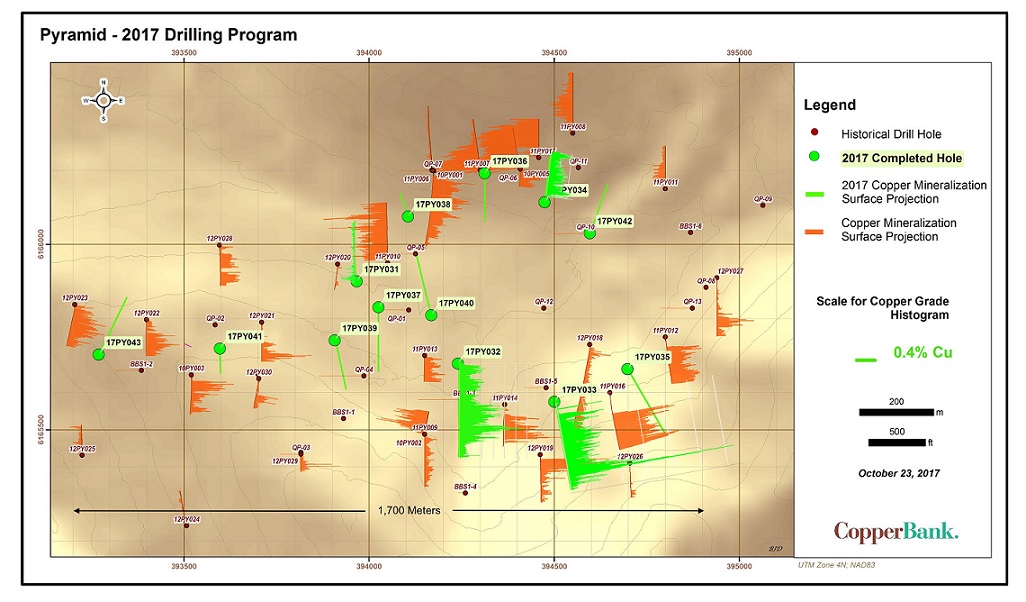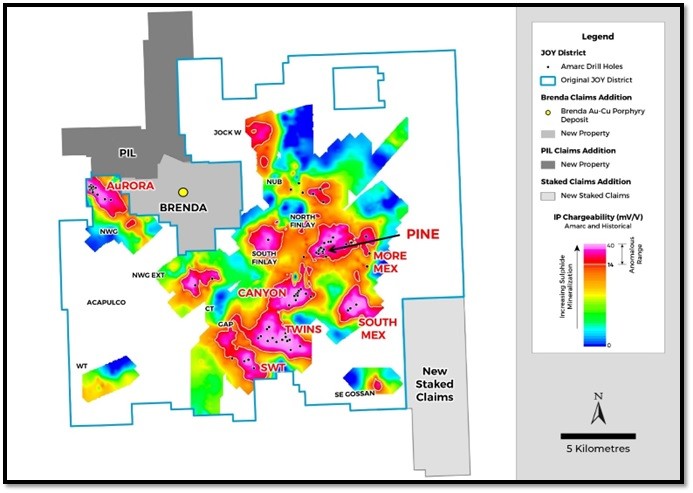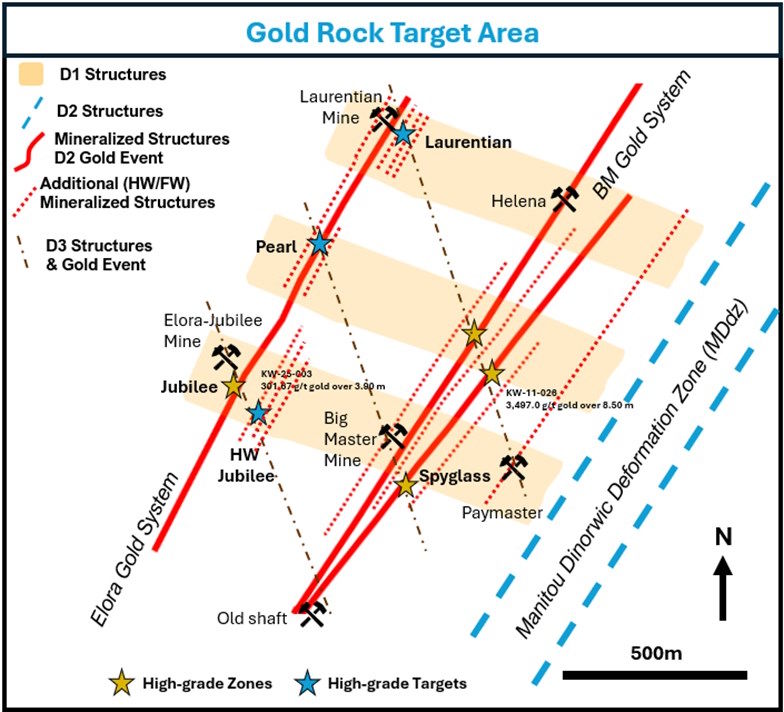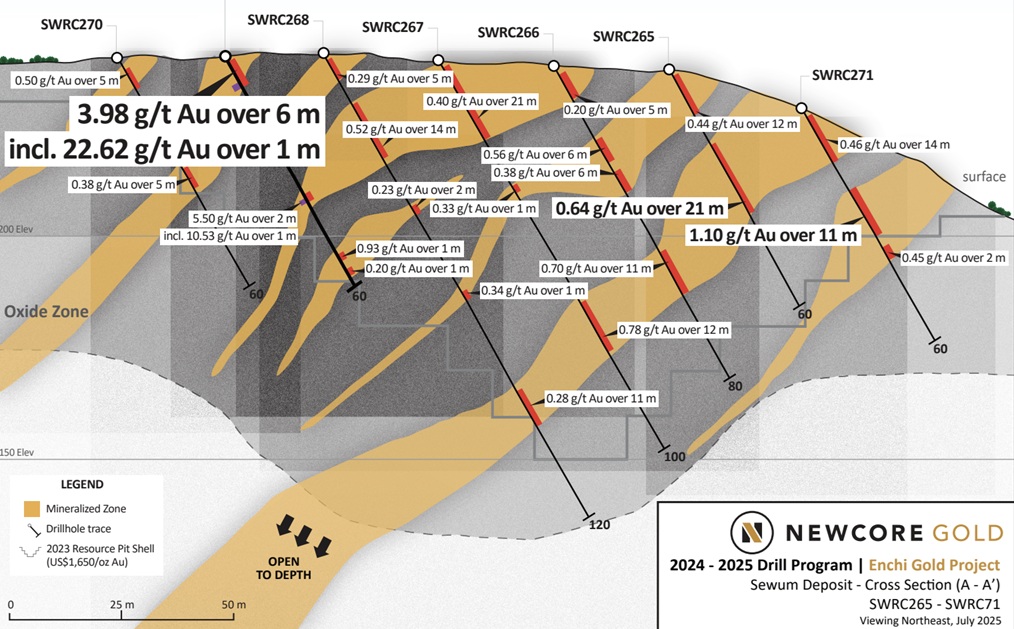VANCOUVER, BC / ACCESSWIRE / October 23, 2017 / CopperBank Resources Corp. ("CopperBank" or the "Company") (CSE: CBK) (OTC PINK: CPPKF) is pleased to report results from the third and fourth drill holes from its thirteen diamond drill hole (DDH) summer 2017 program on its 100% controlled Pyramid Copper Project.
Highlights include:
- DDH 17PY033 intersected, 300 meters of 0.53% copper (0.65% CuEq), including 40.85 meters of 1.17% copper (1.31% CuEq).
- DDH 17PY034 intersected 232.88 meters of 0.19% copper (0.33% CuEq).
- The results from 17PY033 and previously reported 17PY032, confirm a broad horizon of continuous, higher grade mineralization over 400 meters long from 17PY032 to historical drill hole 11PY016.
- Results from the higher grade portions of these holes are not falling within the resource envelope of the historical mineral estimate (SRK 2013).
- The Main Zone is still open laterally and to depth.
- No deleterious chemical elements such as arsenic, antimony or selenium are present in significant levels
The 2017 drilling program, comprising 3,690 meters in thirteen diamond drill holes, was designed to verify the extensions of known mineralization within the deposit and to validate the existing block model established by the historical resource estimate (SRK, June 2013). Detailed maps and cross sections can be found here (click). Diamond drill holes 17PY031 and 17PY032 were previously reported (October 5, 2017).
CopperBank Executive Chairman, Gianni Kovacevic comments, "This program was carefully designed to increase tonnage and examine the higher grade portions of the deposit. Our team is very pleased to report multiple intervals of broad and continuous mineralization at grades higher than the historical resource estimate. We await the results of the final nine drill holes, so our team can see how these results impact the historical resource estimate, and where future drilling should take place."
Drill Hole 17PY033:
Located in the Main Zone, DDH 17PY033 was drilled to a depth of 375 meters and confirmed the existence of significant copper mineralization associated with the main quartz diorite porphyry intrusion as reported in DDH 11PY016 located 150 meters to the East. The contact between the hornfels and the clay altered quartz diorite porphyry returned a broad interval yielding over 1% copper. Mineralization is dominantly chalcopyrite with chalcocite, disseminated throughout the stratigraphic sequence. View table for detailed results.
| From (m) | To (m) | Width (m) | Cu (%) | Mo (%) | Au (g/t) | CuEq (%) |
| 64 | 364 | 300 | 0.53 | 0.02 | 0.12 | 0.65 |
| including | ||||||
| 284.68 | 325.53 | 40.85 | 1.17 | 0.01 | 0.16 | 1.31 |
Note: The copper equivalent (CuEq) values in all the tables in this press release were calculated based on estimated prices of US$2.75/lb of copper, US$1200/oz of gold and US$7.25/lb of molybdenum. No metallurgical tests were done. Metal recovery is unknown and was not taken into account. True width of intervals is yet to be defined.
Drill Hole 17PY034:
Located in the North Zone between historical holes DDH 11PY004 and QP-11, DDH 17PY034 was drilled to a depth of 239 meters. Hornfels intruded by numerous porphyry dykes hosts continuous copper mineralization with higher molybdenum grades than typically observed elsewhere in the deposit. The weighted average grade of the entire hole returns 0.19% Cu over 232.88 meters. Near-surface mineralization is mainly composed of disseminated chalcopyrite and molybdenite with chalcocite.
| From (m) | To (m) | Width (m) | Cu (%) | Mo (%) | Au (g/t) | CuEq (%) |
| 7 | 239.88 | 232.88 | 0.19 | 0.04 | 0.06 | 0.33 |
| including | ||||||
| 215 | 235 | 20 | 0.26 | 0.04 | 0.07 | 0.40 |
Quality Control:
All the core samples collected during the 2017 drilling program are pulverized at the ALS Fairbanks facilities then pulps are sent to ALS Minerals Laboratories in Reno, NV. All pulps are analyzed by a 4 acid multi-element analysis for 61 elements by ICP-AES method and assayed for Au by standard atomic absorption spectrometry (Au-AA23) following the fusion by fire-assay of a 30 gram sample. Samples returning copper values higher than 1% are re-analyzed in Vancouver by ICP-AES following a four-acid digestion and those exceeding 1 g/t gold by gravimetric finish (Au-GRA21). Standards, blanks and duplicates were inserted every 20 samples consistent with industry best practices then revised by a qualified person using a Quality Assurance/Quality Control program before calculating the intervals.
About Pyramid:
The Pyramid project is located on private property with the subsurface controlled by The Aleut Corporation, an Alaska Native-owned corporation. Pyramid is a porphyry copper deposit containing a historical inferred mineral resource estimate of 122 million tonnes of 0.41% copper, 0.02% molybdenum, and 0.10 g/t gold (SRK, 2013) applying a 0.4% copper cut-off, divided in three main recognized zones: Main, North and West. The mineralization is related to a multi-phased calk-alkaline intrusion, intruding sediments of Tertiary Age. The porphyry system is of a minimal extent of 1.5 square kilometres, displays a leached cap, phyllic, propyllitic and potassic alteration analogous to the other copper deposits of the circum-Pacific Belt. The observed mineralization consists mainly in disseminations of chalcocite, chalcopyrite and local molybdenite and sulphide veinlets. Bornite, malachite and chrysocolla are also reported as accessory minerals.
This press release was prepared by Brigitte Dejou, P.Eng and a Qualified Person as defined by NI 43-101.






